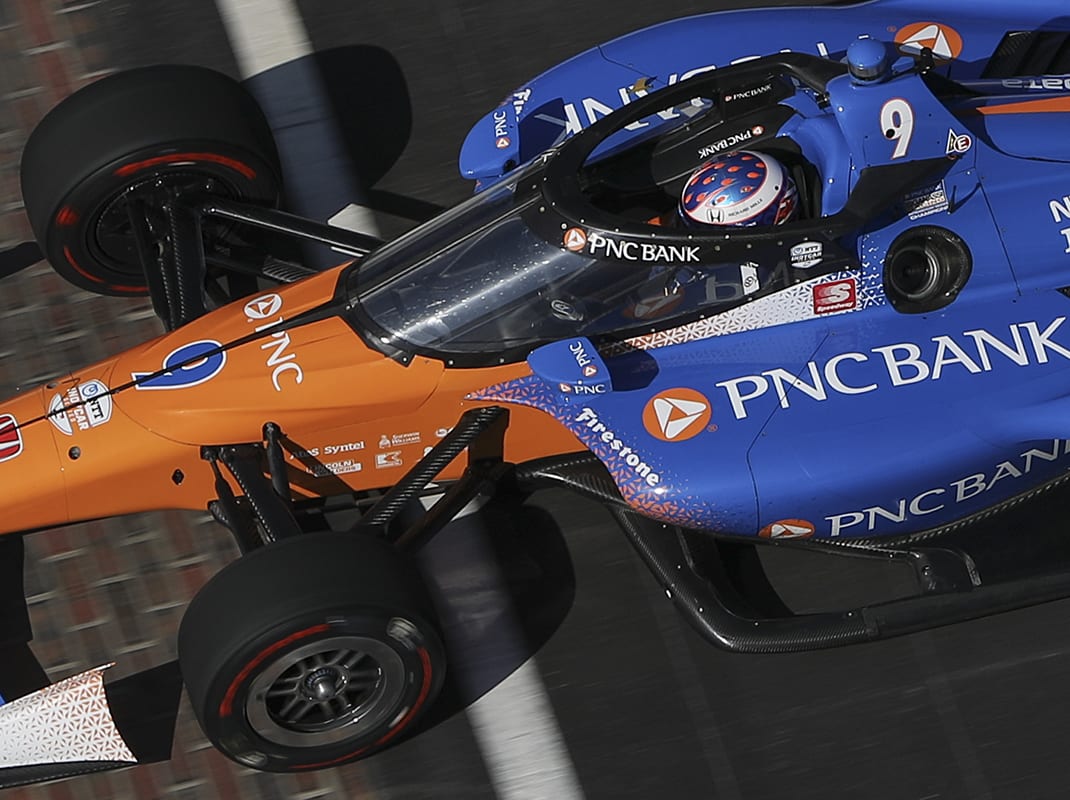When the NTT IndyCar Series season begins, all cars on the track will be fitted with a sleek, new aeroscreen.
It’s the latest safety innovation that may one day save the life of a driver or keep them from serious injury.
IndyCar and Indianapolis Motor Speedway have always tried to be the leader in innovation and safety. Indianapolis Motor Speedway helped develop and implement the Steel and Energy Foam Reduction Barrier along with the University of Nebraska Midwest Roadside Safety Facility, led by Dr. Dean Sicking.
Indianapolis Motor Speedway was the first major racing facility in the world to use the SAFER barrier when it was installed before the 2002 Indianapolis 500.
IndyCar was also among the first to mandate the HANS device, which has significantly reduced basilar skull fractures.
The open-cockpit race cars, however, had one serious flaw when it came to driver safety. The driver’s helmet and visor were still exposed to flying debris.
James Hinchcliffe suffered a concussion when he was hit in the helmet by an endplate off Justin Wilson’s car during the 2014 IndyCar Grand Prix on the Indianapolis Motor Speedway road course.
But the most serious incident happened to Wilson, who was struck in the head by a seven-pound flying projectile — the nosecone off Sage Karam’s crashed race car at Pennsylvania’s Pocono Raceway on Aug. 23, 2015.
Wilson was knocked out and died the next day from a serious head injury.
Once Jay Frye became president of IndyCar, cockpit safety protection was on his list of goals for the drivers. IndyCar began experimenting with a “windscreen” in early 2018. At that time, it was a piece of high-impact-resistant Plexiglass similar to the canopy of a fighter jet.
But that particular design did not hold up to high-impact testing on an Indy car.
Frye, who was once the team principal for Red Bull’s NASCAR program, contacted Red Bull Advance Technology. Red Bull had worked on a similar project for Formula One before its current Halo system was adopted.
“Through Christian (Horner) and Jonathan Wheatley, who is Red Bull’s sporting director and team manager and also a really good friend, we started talking about this,” Frye said. “We had been working on something at IndyCar for several years and couldn’t quite get it over the hump. I called them and they said they had built an aeroscreen for Formula One, but F-1 went with the halo, instead.
“Red Bull still had this piece. I asked if they could work on getting their piece put on our car. It evolved from that.”
Red Bull Advanced Technology developed a system for Indy cars that features a halo structure surrounded by a high-impact clear shield to support the structure. It was designed in conjunction with Dallara and IndyCar.
“It started at the beginning of 2016, working with the FIA on an aeroscreen program, something similar called the canopy,” said Red Bull Racing business development engineer Andy Damerum. “The FIA asked for a number of companies to look at protection devices; halo is one of them, and the windshield was another one.
“Another F-1 team looked at designing a concept, which we came up with. We had experience of working with per specs technologies and safety devices. We have quite a lot of experience in this area.
“F-1 didn’t use the system in the end, but it chose to use the Halo system and I think that was later on that year we got contacted by IndyCar to see if there was an interest and see if we could share our IP with them.”
Pankl builds the heavy-duty, ultra-sturdy top frame and Aerodyne produces the lower frame/tubs. Isoclima and PPG are producing the screens.
The complete aeroscreen assembly will be distributed to each NTT IndyCar Series team. The cost of each unit is estimated at $50,000, although IndyCar is working on a program to give cost savings to the teams for each initial assembly.
Click below to keep reading.
